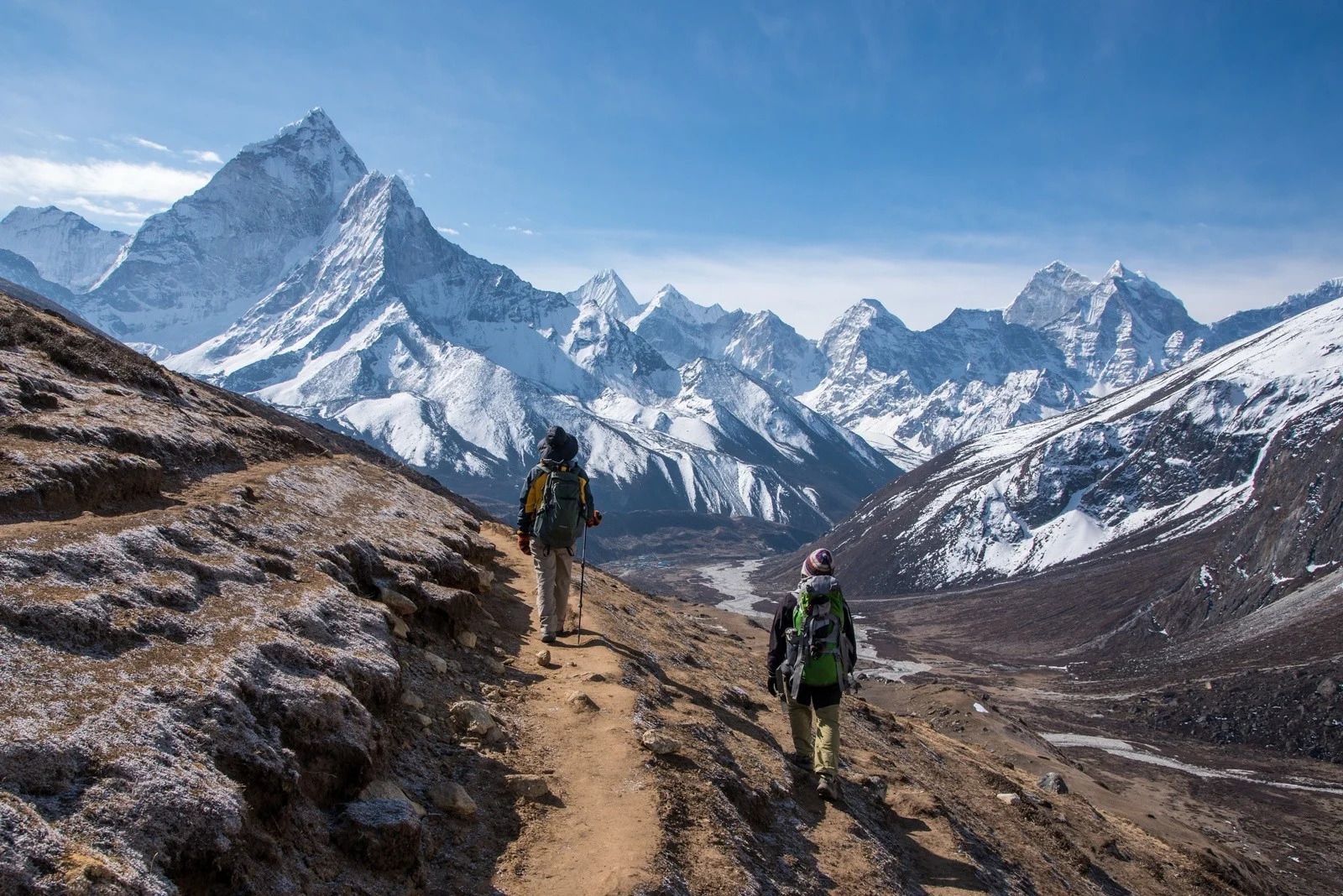
Guide To Planning A Trek To Mount Everest Base Camp
Trek to Everest Base Camp with expert tips on flight AI bookings, permits, and training. Plan wisely for a safe and unforgettable adventure with Booked AI.
This guide will provide you with everything you need to know for an unforgettable expedition. A well-prepared trek enhances safety, enjoyment, and the overall experience, allowing you to focus on the breathtaking journey rather than potential obstacles along the way.
Choose the Best Time for Your Trek

Selecting the right season for your Everest Base Camp trek significantly affects the overall experience. The weather, trail conditions, and visibility vary throughout the year, making some seasons more favorable than others. Find the best flight deals with Booked AI to enhance your travel experience on scenic routes.Understanding Weather ConditionsSpring (March to May) and autumn (September to November) are the ideal times for trekking. Spring offers moderate temperatures and vibrant rhododendron blooms, while autumn provides clear skies and stunning views of Everest. Monsoon season (June to August) should be avoided due to heavy rains, landslides, and low visibility. Winter (December to February) is an option for experienced trekkers who can handle extreme cold and snow-covered trails. Choosing the right season not only ensures safety but also enhances the scenic beauty of your trek.
Book Flights And Permits In Advance

Planning is essential to ensure a smooth trekking experience. Booking flights with AI services early can help secure affordable prices and reliable schedules, as flights to Lukla, your starting point, are often affected by weather conditions. Utilize an AI Trip Planner App for Your Next Adventure and plan your Travel Itineraries to avoid unexpected disruptions, discover the best routes, and ensure a seamless, stress-free journey. Whether you're chasing the sun or looking for the summit of Everest, let AI optimize your trip for the best experience possible.Permits Required For TrekkingTo enter the Everest region, you need two permits: the Sagarmatha National Park Entry Permit and the Khumbu Pasang Lhamu Rural Municipality Permit. If you choose a guided trek, your agency typically arranges these permits. Independent trekkers must obtain them in Kathmandu or Monjo before starting their journey. Securing permits in advance saves time and ensures that you comply with local regulations, making your trek hassle-free.
Train For The Trek

Preparing physically for the trek is essential, as you’ll be hiking for hours each day at high altitudes. Training well in advance will make climbing Everest’s foothills more manageable and enjoyable.Key Fitness ComponentsYour training plan should include cardiovascular exercises such as running, swimming, or cycling to improve endurance. Strength training, particularly for your legs and core, will help you navigate steep trails. Additionally, practice hiking with a loaded backpack to simulate the weight you’ll carry during the trek. Altitude training, if possible, can further prepare you for lower oxygen levels. Training consistently for at least three months before your trek will significantly enhance your stamina and confidence. Climbing Everest successfully requires both mental and physical preparedness.
Pack The Right Gear

Having the right equipment ensures comfort and safety on your trek. The Everest Base Camp route includes diverse landscapes and weather conditions, requiring carefully selected gear.Essential Items to CarryMust-have items include moisture-wicking base layers, an insulated jacket, waterproof trekking boots, gloves, and a durable backpack. A high-quality sleeping bag suitable for sub-zero temperatures is crucial, as temperatures drop significantly at night. Trekking poles aid stability on uneven terrain, and UV protection is necessary to prevent sunburn at high altitudes. Packing smartly with lightweight yet functional gear minimizes fatigue and maximizes comfort during the trek.
Acclimatize Properly To Avoid Altitude Sickness

Acclimatization is a key factor in successfully reaching the Everest Base Camp. Gaining altitude too quickly can lead to Acute Mountain Sickness (AMS), which may force trekkers to descend or abandon the journey.Recommended Acclimatization StopsMost standard itineraries include rest days in Namche Bazaar and Dingboche. These stops allow your body to adapt to lower oxygen levels. Stay hydrated, avoid alcohol, and listen to your body. If symptoms like headaches or dizziness persist, descend immediately. Following a slow ascent schedule helps prevent AMS and ensures a safer and more enjoyable trekking experience. If you are still reading this and consider yourself a hiking enthusiast, check out The Best Hiking Destinations In The World and discover trails to connect with nature's grand ambiance.
Plan Your Budget

A well-planned budget prevents unexpected financial stress during the trek. Flights AI services can help you compare flight costs and help find you the best budget flights, while on-ground expenses vary based on your trekking style and the facilities you opt for.Estimated ExpensesTrekking independently costs around $1,000 to $2,000, while guided tours range from $2,500 to $4,000. Expenses include permits, accommodation, food, and gear rentals. Luxury treks offer premium lodges, helicopter returns, and added comfort but come at a higher price. Budgeting appropriately ensures you have sufficient funds for unexpected expenses while maintaining a comfortable experience.
Choose Between Solo or Guided Trek

Deciding between a solo trek and a guided expedition depends on your experience, confidence, and personal preference. With an AI travel agent, planning your first solo trip has never been easier.Pros and Cons of Each OptionSolo trekking provides flexibility and cost savings but requires strong navigation skills. Guided treks ensure safety, provide local expertise, and take care of logistics, making climbing Everest’s trails more accessible for beginners. If you’re unfamiliar with the region, a guided trek is the best option to maximize your experience while reducing risks.
Understand Local Culture and Etiquette

Respecting the customs of the local Sherpa community enhances your trekking experience and fosters positive interactions with residents. Travel like a Local and nurture meaningful connections along the way.Key Cultural PracticesGreet locals with ‘Namaste,’ avoid touching people’s heads, and dress conservatively. Always follow teahouse rules, ask permission before taking photos, and be mindful of sacred sites such as monasteries and prayer wheels. Engaging with the local culture enriches your journey and provides deeper insight into the region’s traditions.

